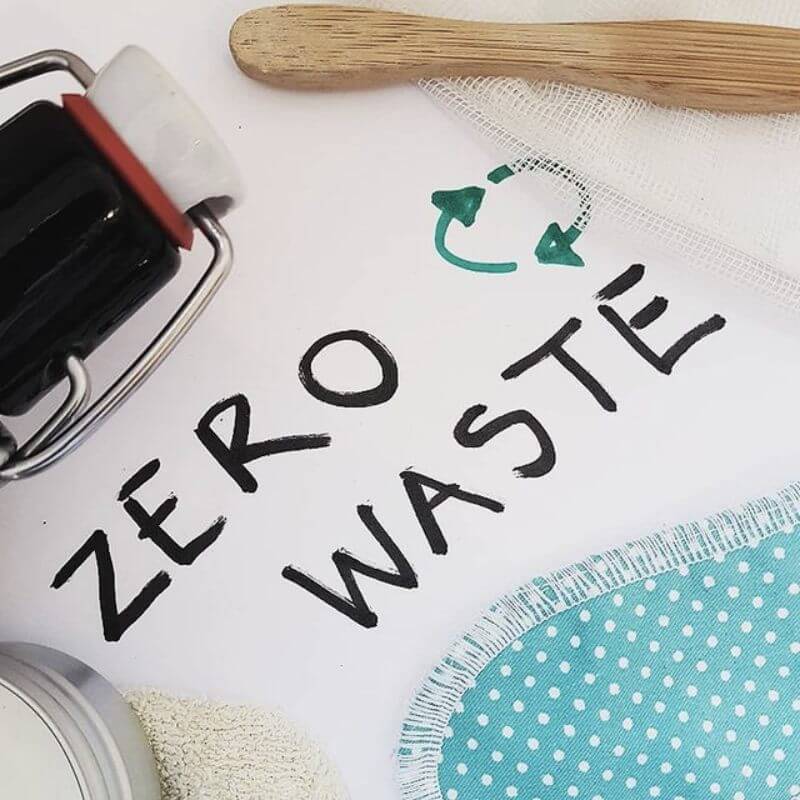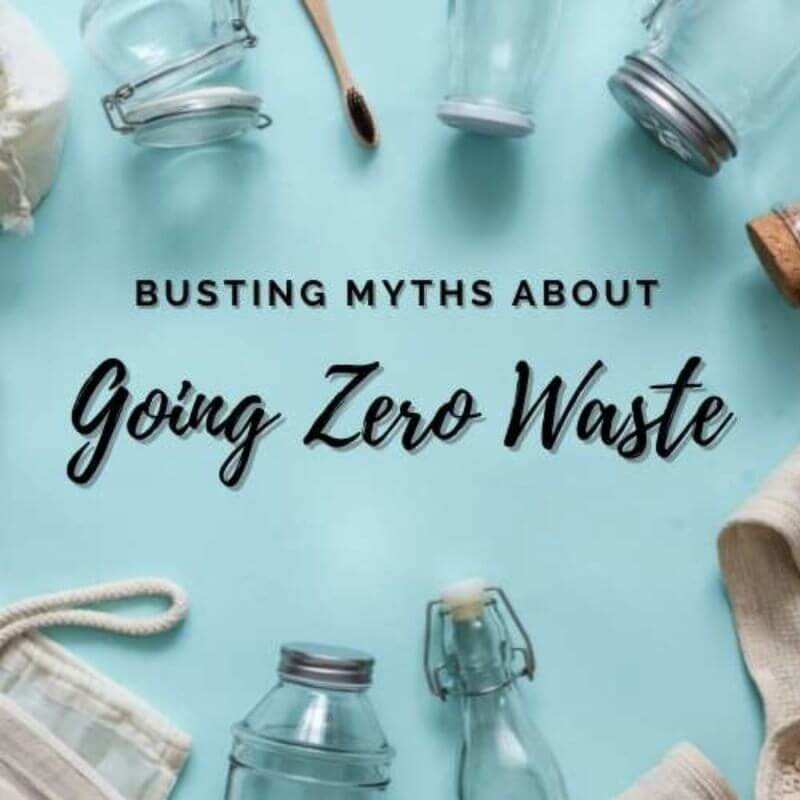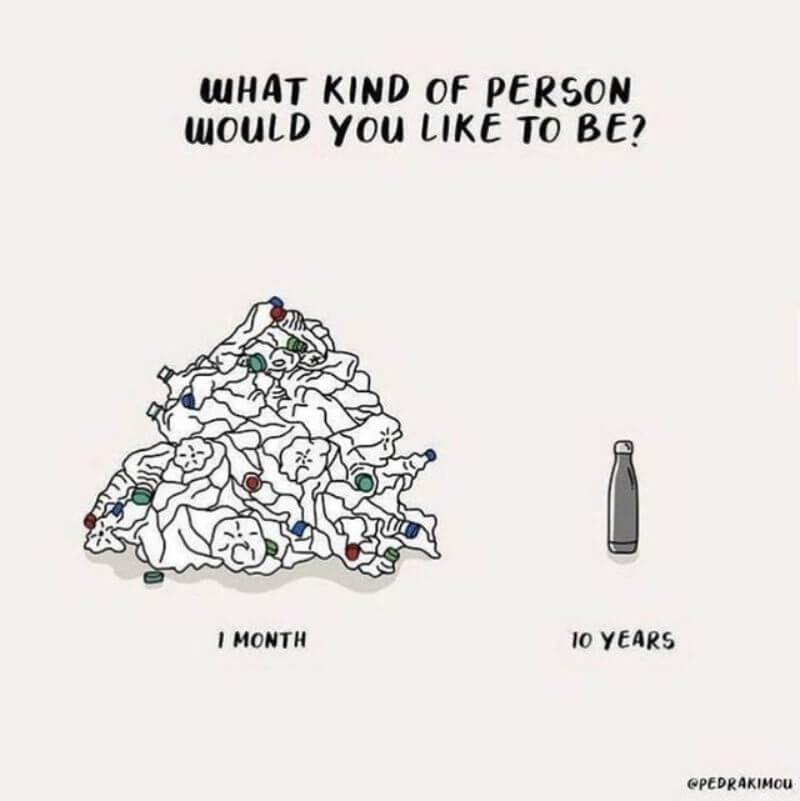The internet is booming with talks about how to start a zero-waste lifestyle, zero-waste products such as bamboo cutlery, beeswax wraps, and many more tips to go zero waste. But what exactly does it mean to go zero-waste or opt for a zero-waste lifestyle? In easy words, it means trying not to send anything to the landfills. Instead, reduce, compost, reuse, and recycle as much as possible. Let’s learn more about zero-waste living in this article, where we have tried to answer the most common questions about a zero-waste lifestyle.

Defining zero-waste
So, to go zero-waste, the first step is to understand the concept itself. According to the Zero Waste International Alliance, “Zero Waste: The conservation of all resources by means of responsible production, consumption, reuse, and recovery of products, packaging, and materials without burning and with no discharges to land, water, or air that threaten the environment or human health.”
In simpler words, zero-waste is more about preserving resources in a way that less to no waste gets generated altogether. When there’s not much waste, there’s a lesser need to manage it, be it at home or in landfills.

For example, when we cook a particular dish, the first step would be to use the ingredients we already have. If we need to buy ingredients as per your recipe, get them locally without using plastics or in compostable packaging. Next, we should reuse veggies for the recipe and put peels to make a broth, and then compost what’s remaining.
In the above example, we had little packaging and food waste that could be easily composted. Any leftovers can be frozen and stored, instead of being thrown away. This is just an example of one instance; similar things can be done for low-waste habits.
With such small steps, we can switch to a low-waste lifestyle. Let’s look more closely at a zero-waste lifestyle, how it can be achieved, and why it is needed in today’s scenario.
What is a zero-waste lifestyle?
A zero-waste lifestyle is all about circularity. In the current scenario, we only take resources from the planet and do not give them back. Instead, most of it goes to waste and ends up in landfills. A zero-waste lifestyle is very similar to nature, where there is no trash. It is all about returning the resources back to the planet after taking them.
Related Article: 5 Books That Will Inspire A Zero Waste Lifestyle
Every guide on how to start a zero-waste lifestyle start with the fact that we need to be more conscious about what we consume. It’s not simply about swapping everyday items with zero-waste products, but more about where things come from and where they end up. We also need a new way of thinking about food. Not just what comes out of our fridge but also how it was grown, be it on a farm or a kitchen garden.
Misconceptions about a zero-waste lifestyle

Everything we read on the internet might not be true, and the same applies to the banter about the zero-waste concept. So, let’s debunk some common myths about a zero-waste lifestyle.
1. Get rid of all the plastic you have.
No, you don’t have to do this. Instead, keep using it until it is completely worn out. And try to avoid bringing plastic home after transitioning to a zero-waste lifestyle.
2. A zero-waste lifestyle is expensive.
At first, when you begin to invest in reusable products, it might seem expensive. But over time, it really pays off. It even helps you save money. However, if you’re living both a non-zero and a zero-waste lifestyle, it is expensive. Only when you comply with the values of zero waste, it is going to become more pocket-friendly for you.
3. You will have to become vegan or vegetarian.
Not really. (Well, it’s great if you are!) But not everyone can commit to not eating meat. So instead, what you can do is follow ‘Meatless Mondays‘ or lower your dairy, fish, and meat intake. You can also try vegan meat options if you wish to experiment.
4. You have to avoid plastic packaging at all costs.
Sometimes you just can’t avoid it. But, what you can do first, is try to search for plastic alternatives. They may or may not be zero waste products. Then, ask yourself if you need that plastic item or can you go without it? And finally, if you can go without it, that’s great – less plastic; but if you cannot, that’s okay – you tried your best!
5. One person cannot make a difference.
That’s not true at all! Every small step makes quite a considerable difference. (The pandemic has indeed taught us that!) And it’s always good to influence people around you, one way or the other. One to two, two to many – that’s how all positive change begins!
Why do we need a zero-waste lifestyle?
The short and simple answer to this question is the waste problem. We are consuming a lot of resources. In fact, if we consider Earth Overshoot Day, then we’re exhausting more of the planet’s budget of natural resources by the year. The last Earth Overshoot Day was on 29 July 2021, and the next one is on 28 July 2022; this means we are effectively living on credit and using resources from 1.75 Earths.
The problem does not end when the waste reaches the landfill. The waste from the landfills contaminates the environment if not managed properly. Moreover, things like chemical products, textiles, etc., should not be sent to landfills. According to a report by the EPA, waste in landfills releases toxins that mix with water that leeches into the soil and eventually into the groundwater, contaminating it.
Plastics, on the other hand, are another horror story. 1.2 million plastic bottles are used every minute around the world — that’s more than 1 billion bottles each day! And 91% of this number is not recycled; instead, we find these plastics in the oceans and all around us. If you add up how much waste such bottles alone generate, then it will be clear why it is important for us to rethink what to throw away in the first place!
According to the EPA, an average American produces approximately 4.5 to 4.9 pounds of waste every day. This means annually, a person generates around 1600 pounds of waste. If even a single person opts for a few zero-waste products or a zero-waste lifestyle, then he or she can significantly reduce the amount of waste that ends up in landfills, making a huge difference.
Is it possible to go completely zero-waste?

The interesting question that comes to mind now is – is it really possible to go completely zero-waste? Honestly, it is a bit extreme and, practically, might not be 100% possible. While it is not possible to go completely zero-waste, the good thing is that it’s not about going all-in or nothing at all. To live more sustainably, we can start slow and do as much as we can. We can choose to live a low-waste or minimalist lifestyle, if not completely zero-waste.
We hope this article helped to answer some of your questions about zero-waste living. If you have more doubts, do reach out to us.
Yours consciously,
GoodGuilt 🌱










